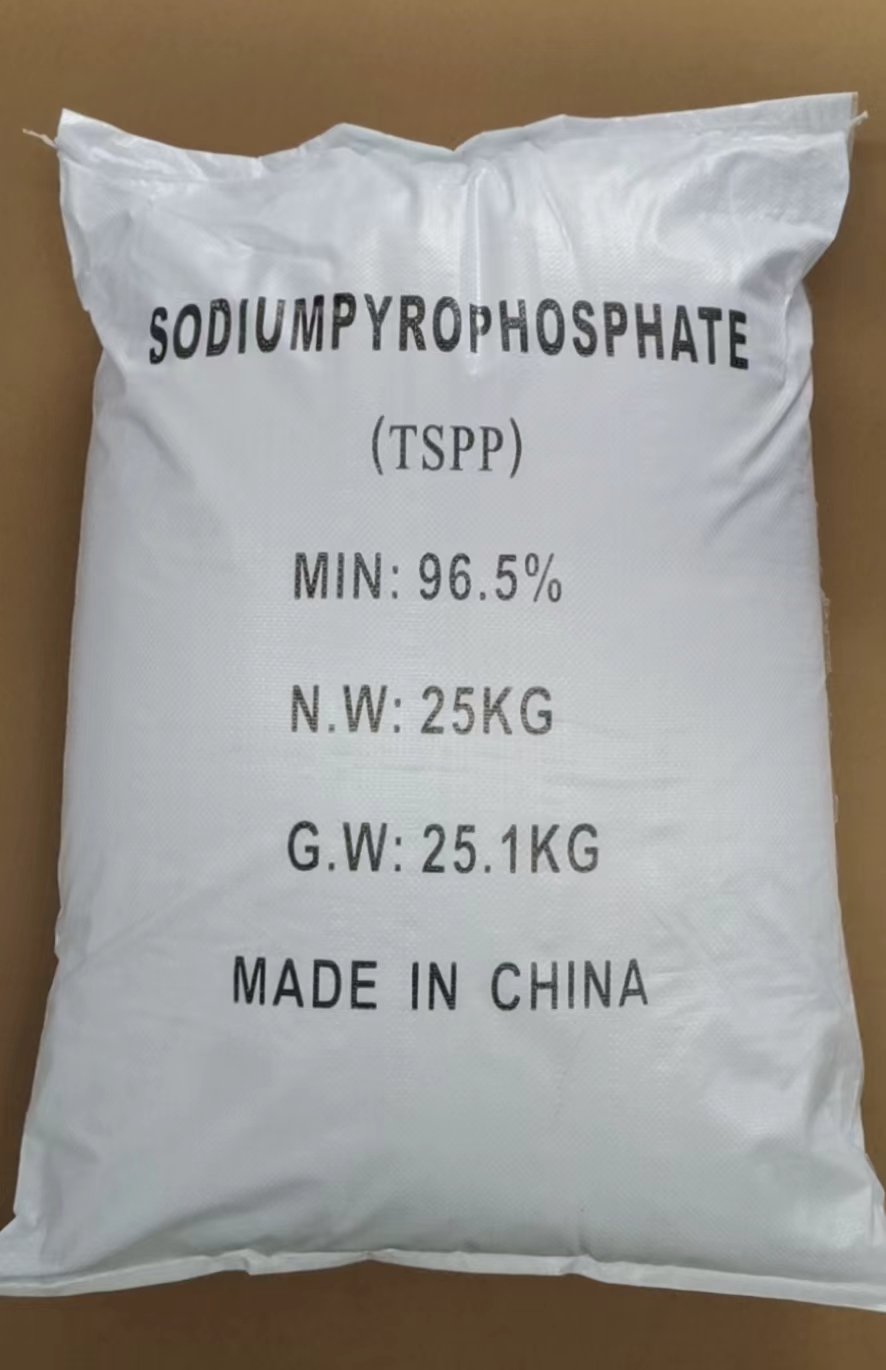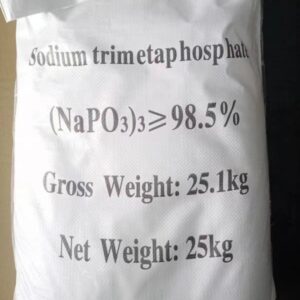Tetrasodium pyrophosphate
Molecular Formula: Na₄P₂O₇
Molecular Weight: 265.9
CAS Number: 7722-88-5
EINECS Number: 231-767-1
H.S. Code: 28353990
Alias: Tetrasodium Pyrophosphate, Sodium Pyrophosphate, TSPP
Characteristics:
- White powder
- Soluble in water, insoluble in alcohol
- Relative density: 2.45
- Melting point: 890°C
- Aqueous solution is weakly alkaline and hygroscopic in air
- Aqueous solution is stable at 70°C, hydrolyzes to disodium phosphate upon boiling
Description
Product Uses:
- Electroplating Industry Electroplating Solution: Sodium pyrophosphate can form complexes with metals such as iron and copper, making it an important component of electroplating solutions, contributing to enhanced electroplating effects.
- Textile Industry Wool Degreasing Agent and Scouring Agent: In the wool textile industry, sodium pyrophosphate is often used as a degreasing agent and scouring agent for wool, helping to improve the quality of wool fibers.
- Papermaking Industry Paper and Plant Fiber Bleaching: Sodium pyrophosphate is used in the bleaching process of paper and plant fibers, enhancing the whiteness and quality of paper.
- Printing and Dyeing Industry Printing and Dyeing Auxiliaries: In the printing and dyeing industry, sodium pyrophosphate serves as an auxiliary agent during printing and dyeing processes, improving dye uptake and color brilliance.
- Daily Chemical Industry Toothpaste Additive: Sodium pyrophosphate can form colloids with calcium hydrogen phosphate, playing a stabilizing role in toothpaste, making it an important additive. Detergents and Shampoos: It is also used in the synthesis of detergents and production of shampoos to enhance cleaning efficacy.
- Industrial Water Treatment Softening Agent and Descaling Agent: Sodium pyrophosphate functions as a water softener, removing ions such as calcium and magnesium from water, reducing water hardness, and preventing scale formation. Additionally, it chelates metal ions, acting as a corrosion inhibitor to protect metal pipes and equipment from corrosion. It finds extensive application in boilers, circulating water systems, cooling towers, and other areas.
- Mechanical Processing Rust Remover: During mechanical processing, sodium pyrophosphate can be used as a rust remover, helping to eliminate rust and dirt from metal surfaces.
- Chemical Production Dispersant and Emulsifier: In chemical production, sodium pyrophosphate serves as a dispersant and emulsifier, improving the dispersibility and stability of products.
- Food Industry Quality Improver: Sodium pyrophosphate is primarily used in the food industry as a quality improver, emulsifier, buffering agent, and chelating agent. It can chelate ions such as calcium and magnesium in food, releasing bound phosphates to enhance the taste and quality of food products. Moreover, it acts as a preservative and antioxidant, extending the shelf life of foods. It is widely used in meat processing, canned food manufacturing, beverage production, and other fields.
- Other Applications Production of Other Phosphates: Sodium pyrophosphate is also used as a raw material for producing other pyrophosphates. Petroleum Drilling: In the petroleum industry, sodium pyrophosphate is used to enhance oil recovery rates.
Packaging, Storage, and Transportation:
- Available in 25kg, 50kg, 1000kg, 1200kg, 1250kg bags with customizable options.
- Store in a dry, well-ventilated area, and avoid exposure to moisture. It retains its quality during long-term storage, and any clumping can be resolved by crushing or dissolving before use.
- Non-toxic and non-hazardous, it can be transported by road, sea, or rail as general cargo.
Specifications:
Item | Index HG/T2968-2009 |
|---|---|
Main content (as Na4P2O7)ω/ % ≥ | 96.5 |
pH value (10g/L) | 9.9-10.7 |
Water insoluble,ω/ % ≤ | 0.15 |
orthophosphate | Pass |





